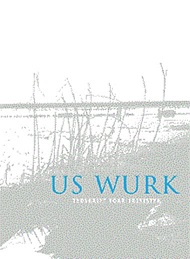Ik har, wy har(re): de r yn it notiidsparadigma fan ha(wwe) en yn dat fan dwaan, slaan en sjen
Abstract
This article deals with a variant of the verb hawwe 'to have', which has (just like variants of the verbs dwaan 'to do', slaan 'to hit' and sjen 'to see') in a part of the Frisian-speaking region a stem-final r in the first person singular (e.g. ik har 'I have') and in the plural forms of the present tense (e.g. wy har(re) 'we have'). It is shown that the r-variants are located in the north-eastern part of the Frisian-speaking area. The variant of the verb hawwe in the north-eastern dialects has, at least for a part of the Frisian-speakers, completely lost its original stem-final v, as is demonstrated by the fact that the gerund nowadays occurs as te ha in stead of te hawwen. The present tense forms of the verbs dwaan, slaan and sjen also have variants without the original stem-final consonant /γ/ (e.g. ik/wy do ([do]) 'I/we do' instead of ik doch/wy dogge). Therefore, and due to the fact that the r-variants occur before word-initial vowels, it can be concluded that the r is inserted between adjacent vowels. Insertion of the r - that should be regarded as inversion of the r-deletion-rule - was made possible by the fact that the vowels /a/ and /o/ block the insertion of a homorganic glide. The r-variants of the verbs involved can nowadays be considered as lexicalized.

